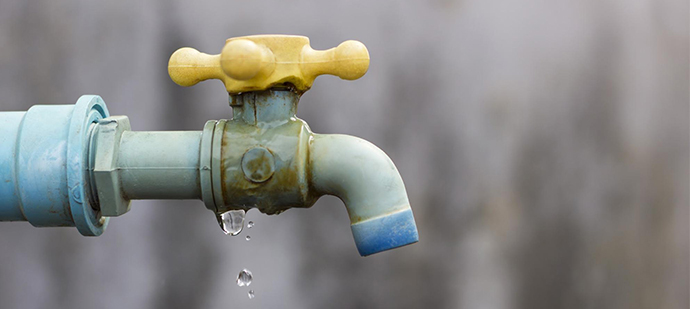Revealing Concealed Water Line Leaks: Six Effective Detection Methods
Revealing Concealed Water Line Leaks: Six Effective Detection Methods
Blog Article
We have stumbled upon this post about Finding hidden leaks listed below on the net and reckoned it made perfect sense to share it with you on my blog.

Early detection of dripping water lines can minimize a possible disaster. Some tiny water leaks might not be noticeable.
1. Check Out the Water Meter
Every home has a water meter. Examining it is a surefire manner in which helps you find leakages. For beginners, turn off all the water sources. Ensure no person will certainly purge, make use of the tap, shower, run the cleaning equipment or dishwasher. From there, go to the meter and watch if it will alter. Considering that nobody is utilizing it, there must be no motions. If it relocates, that shows a fast-moving leakage. Also, if you find no changes, wait a hr or 2 and also examine back once more. This indicates you might have a slow-moving leakage that can also be below ground.
2. Inspect Water Usage
If you spot abrupt modifications, despite your intake being the very same, it indicates that you have leaks in your plumbing system. A sudden spike in your costs shows a fast-moving leakage.
A stable increase every month, even with the same routines, shows you have a slow-moving leak that's also slowly escalating. Call a plumber to extensively examine your building, particularly if you feel a warm location on your floor with piping beneath.
3. Do a Food Coloring Examination
When it comes to water usage, 30% comes from commodes. If the color in some way infiltrates your bowl during that time without flushing, there's a leakage between the storage tank and dish.
4. Asses Outside Lines
Don't fail to remember to examine your outdoor water lines too. Ought to water permeate out of the link, you have a loosened rubber gasket. One little leakage can squander loads of water and surge your water expense.
5. Evaluate the circumstance and inspect
Property owners ought to make it a practice to check under the sink counters and also inside closets for any type of bad odor or mold growth. These two red flags show a leakage so timely interest is called for. Doing regular examinations, also bi-annually, can conserve you from a significant issue.
Inspect for discolorations as well as compromising as most appliances and also pipes have a life expectations. If you presume leaking water lines in your plumbing system, do not wait for it to escalate.
Early discovery of dripping water lines can reduce a possible catastrophe. Some tiny water leakages may not be noticeable. Checking it is a guaranteed way that helps you find leaks. One small leak can lose loads of water and also spike your water costs.
If you suspect dripping water lines in your plumbing system, don't wait for it to rise.
5 Signs that Your Home Has a Hidden Leak
Your water bill is unusually high without explanation
Generally, your water bill tends to stay consistent throughout the year as long as the same number of people live in your household year round. The bill might be higher during certain times of the year, such as summer, when your lawn may require more watering than it does in cooler months. However, if you notice a rise in your water bill that you can’t explain, it’s an indicator that there’s a hidden leak somewhere in your home.
You hear running water
One of the biggest signs that you have a water leak is the sound of rushing water when no plumbing fixtures are on and when no water-using appliances are running. If you hear running water in your walls when no water is being used anywhere in your home, locate your home’s main water shut-off valve, shut off your water supply, and contact a plumber at once.
Your home smells musty
Hidden leaks often occur in dark spaces, such as behind walls or under carpeting. Incidentally, darkness and moisture can create an ideal breeding environment for mold or mildew. If you start to smell mildew or the scent of rotting wood or stagnant water around your home, it’s a fair bet that a leak is the culprit.
You find wet spots around your home
The wet spots usually show up as moist areas in your carpeting. If your home has a basement level, puddles on the floor could indicate a slab leak. Outside, unexplainable puddles or lush, green patches in your yard often mean that there’s a leak in your sewer line or main water line.
You have stains, bubbles, or condensation on your walls/ceiling
Stains or condensation on your walls or ceiling are both major signs of a hidden leak. Also, drywall (AKA. sheetrock) is very absorbent, and as it takes on more water from a leak behind a wall, it will start to bubble, swell, or warp. If you see this happening in your home, don’t wait to contact a plumber before the water damage spreads.
https://www.ezflowplumbingaz.com/blog/2019/june/5-signs-that-your-home-has-a-hidden-leak/

Do you like more info about Locating water leaks? Place a review directly below. We would be delighted to listen to your ideas about this content. In hopes to see you back again in the near future. Make sure you set aside a second to distribute this blog post if you enjoyed it. Thanks a bunch for your time. Don't forget to check our blog back soon.
We're waiting, call! Report this page